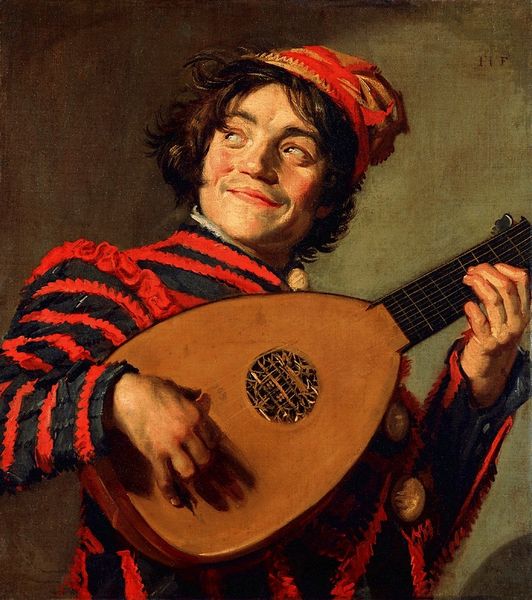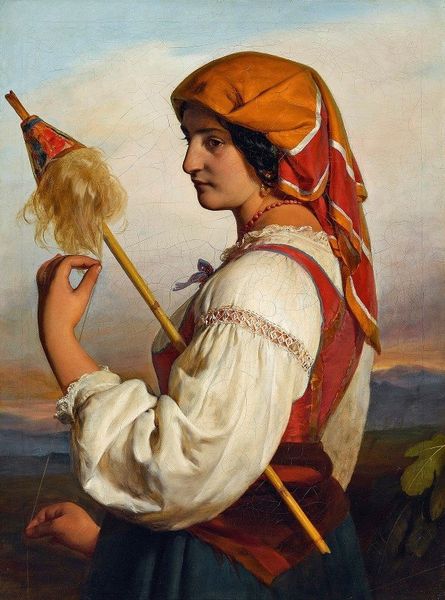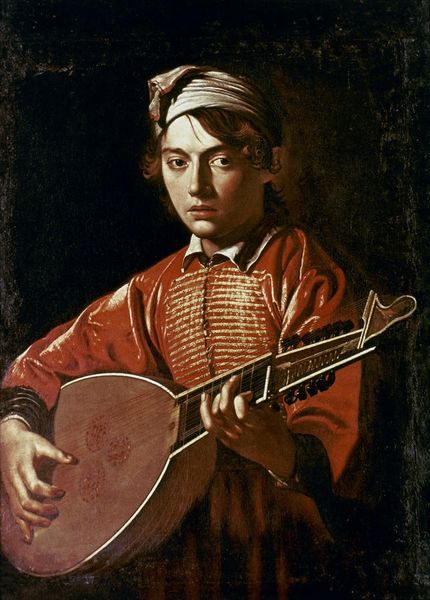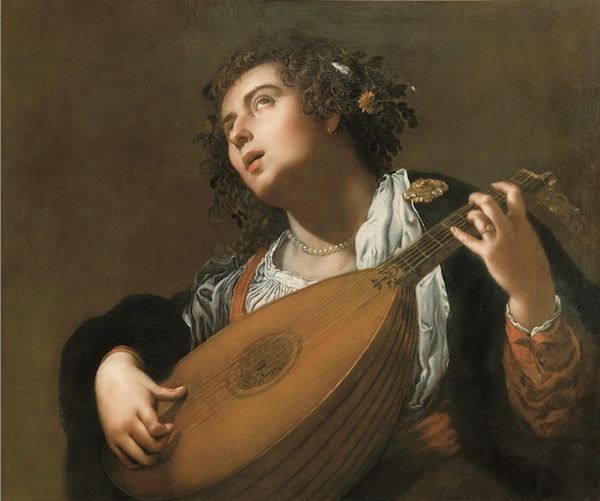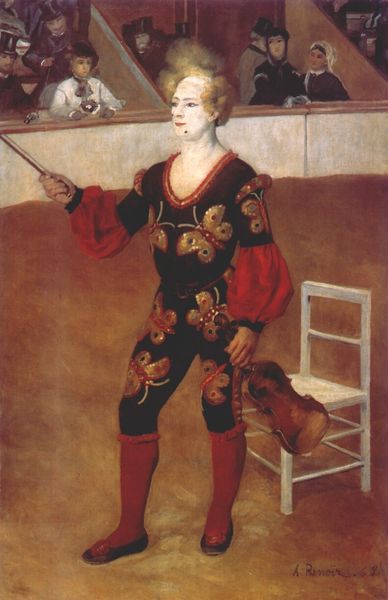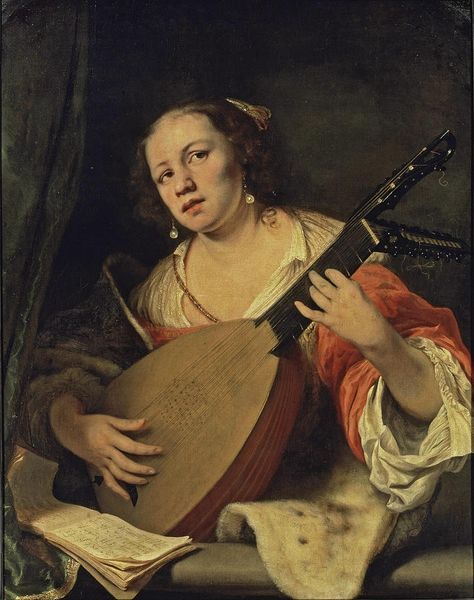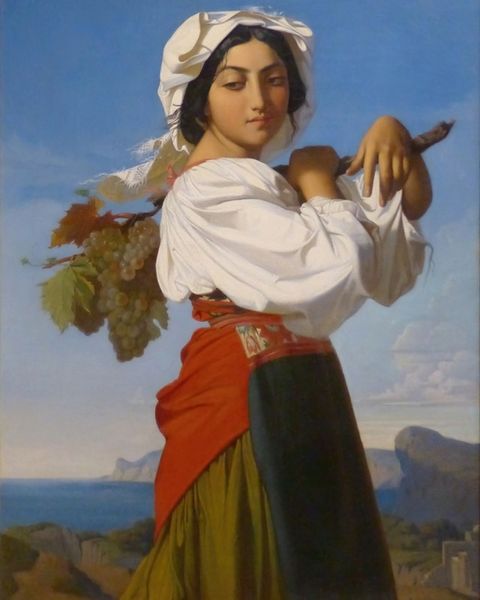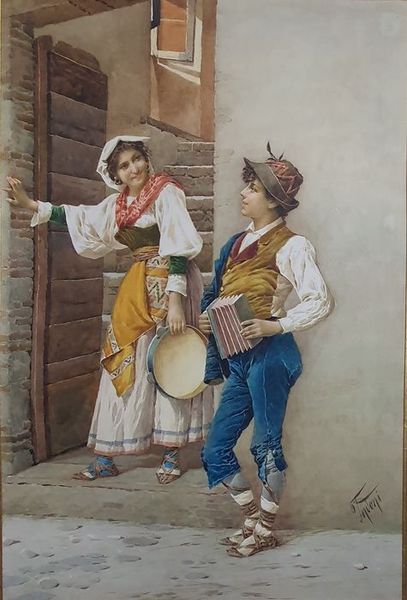
painting, oil-paint
#
portrait
#
baroque
#
painting
#
oil-paint
#
oil painting
#
genre-painting
#
italian-renaissance
Dimensions: 59 x 45 cm
Copyright: Public domain
Editor: Here we have Jusepe de Ribera’s “Girl with Tambourine” from 1637, rendered in oil. There’s a certain immediacy in the subject’s expression, almost like a snapshot capturing a candid moment. How do you read this piece? Curator: Precisely. Note how Ribera’s formal composition invites us to consider line, shape, and texture. The stark contrast between the dark background and the bright skin of the girl compels the viewer’s attention, doesn’t it? We find visual rhythm created by the repeated circles of the tambourine mirroring the girl’s open mouth. Editor: Yes, that’s striking! It almost suggests an audible link between what we see and hear. What about the earthy palette Ribera employed? Curator: An astute observation. The limited chromatic range amplifies the dramatic tension inherent to Baroque paintings, directing attention to the tonal values and figural depiction. The chiaroscuro is carefully constructed to highlight texture and surface detail in her face, hands, and tambourine. What semiotic significance do you see in the inclusion of musical instruments? Editor: Well, maybe the tambourine suggests themes of celebration or performance… Perhaps it’s a symbol of feminine energy? Curator: Possibly, yet let’s focus on how Ribera’s structured composition—the careful distribution of weight and form—dictates our understanding of the subject matter. Ultimately, Ribera directs our attention towards the act of looking itself, no? Editor: So, it is the structured elements rather than symbolic meaning, shaping our viewing experience. Curator: Exactly! We should move beyond personal or symbolic interpretations to apprehend how artistic decisions mold our sensory understanding. Editor: I never thought about approaching paintings that way. Thanks for opening my eyes. Curator: My pleasure. Never underestimate how close analysis allows the artwork to express itself.
Comments
No comments
Be the first to comment and join the conversation on the ultimate creative platform.
